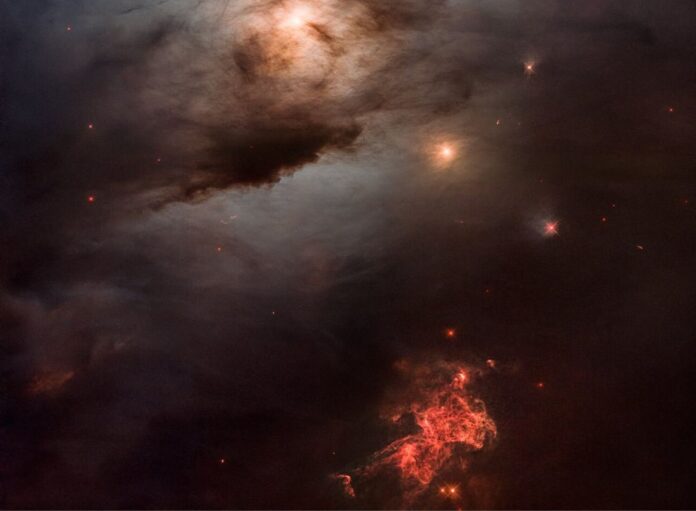The Hubble Space Telescope snapped a stunning new photo of a nearby star-forming region to celebrate its 33rd launch anniversary.
Located only 960 light-years away in the Perseus molecular cloud, a reflection nebula known as NGC 1333 harbors hundreds of newly forming stars. Hubble peered through thick clouds of dust and gas, including cold molecular hydrogen, which is an essential element for the formation of stars and planets, according to a statement (opens in new tab) from the European Space Agency (ESA).
“Hubble’s colorful view, showcasing its unique capability to obtain images in light from ultraviolet to near-infrared, unveils an effervescent cauldron of glowing gases and pitch-black dust stirred up and blown around by several hundred newly forming stars embedded within the dark cloud,” ESA officials wrote in the statement.
“Even then, Hubble just scratches the surface; most of the star-birthing firestorm is hidden behind clouds of fine dust — essentially soot — that are thicker toward the bottom of the image,” they added. “The black areas of the image are not empty space, but are filled with obscuring dust.”
Related: The best Hubble Space Telescope images of all time!
Hubble launched into orbit around Earth on April 25, 1990, aboard the space shuttle Discovery. Since then, the iconic scope has collected roughly 1.6 million observations of nearly 52,000 celestial targets, according to the statement.
The new image of NGC 1333 showcases ferocious stellar winds sweeping through the nebula’s clouds of dust. These stellar winds are likely caused by the bright blue star at the top of the image, highlighting the messy and chaotic nature of star formation in the universe.
Another bright super-hot star can be seen near the bottom of the image, shining through the nebula’s dust like Earth’s sun masked by cloudy skies. The reddish glow represents hydrogen ionized by young stars, which propel bursts, or jets, of material into space as they grow and accrete infalling dust and gas from the surrounding area. The fine dust of the nebula filters the starlight, allowing more of the red light to shine through, but scattering the light at blue wavelengths, according to the statement.
“This view offers an example of the time when our own sun and planets formed inside such a dusty molecular cloud, 4.6 billion years ago,” ESA officials wrote in the statement. “Our sun didn’t form in isolation but was instead embedded inside a mosh pit of frantic stellar birth, perhaps even more energetic and massive than NGC 1333.”
Follow Samantha Mathewson @Sam_Ashley13 (opens in new tab). Follow us @Spacedotcom (opens in new tab), or on Facebook (opens in new tab) and Instagram (opens in new tab).

